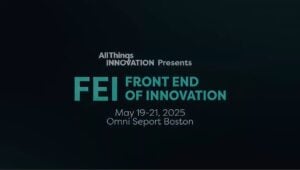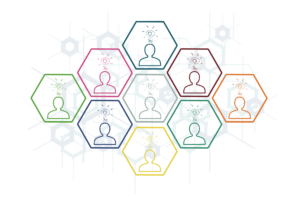Fueling Sustainability
It’s never been a more competitive time for growth in the consumer-packaged goods world, and companies continue to look at cost savings and efficiencies while at the same time driving the consumer product pipeline.
The rubber meets the road at a key inflection point for Gail Martino, formerly Senior Manager, Unilever. Martino is currently VP Partnerships, 387Labs. Already, sustainability could be seen as a key innovation focus, but Martino feels this will only grow in the future.
Martino points to other future trends as well:
• AI-Driven Personalization: Leveraging AI to offer tailored consumer experiences.
• Sustainable Product Lines: Expanding offerings that prioritize environmental responsibility.
• Advanced Biotechnology: Utilizing biotech to create innovative, sustainable products.
“By staying at the forefront of these trends, consumer packaged goods companies will aim to continue delivering value to consumers while promoting sustainability,” says Martino.
Customizing the Right AI Tool
In the future, Kate Carruthers, Director, Info Sphere Education, also points to more customized and personalized AI platforms and experiences, on both an individual and corporate innovation basis. Carruthers, who was previously Chief Data & Insights Officer, UNSW Planning & Performance, UNSW Sydney, feels we are still in the early stages of AI adoption—but on the cusp of more custom models.
“I really can foresee that innovators are going to start to use AI to generate ideas. We used to lock people in a room to do brainstorming. AI can do that brainstorming for you, so that need to lock people in the room and ask them to brainstorm on sticky notes—that will literally go away,” says Carruthers. “What innovators will do is to ask a generative AI model what innovations can we do? That will be how they’ll start it.”
Carruthers continues, “There’ll be the growth of these large language models, such as ChatGPT and DeepSeek. What’s going to happen though is I suspect we’re going to have a lot of smaller custom bespoke models that just do one thing. So ChatGPT tries to do everything for everybody and it’s really big and costs a lot to run. There’ll be a custom model that organizations will have that understands their business, can look across their structured and unstructured data and understand their operations, the business, the financials, the product stuff. It’ll have that and then it’ll be able to tap into things like OpenAI, but you’d be able to ask it for innovation ideas because a lot of what we do as innovators is develop the next product. We don’t always need to innovate a brand new product. We just need to do a product variation a lot of the time.”
She adds, “I suspect that organizations will develop their own custom models of AI that will be able to start recommending fresh and refreshed ideas and strategies. In this future, you’ll have your own custom models, your own business, or your own industry because you’ll also want to look at what your competitors are doing. That’s kind of the future.”
The future may be arriving sooner than anyone thinks. Inevitably, the innovation journey will evolve as change management tools and strategies become more refined.
“You’ve got your innovation journey, you’ve got change, and then under that, you’ve got your AI toolset,” says Carruthers. “One of the things they’re going to need is to have an idea of which AI tool is best for which kind of application. I think that’s the missing piece that a lot of innovative organizations will need to get their heads around fairly quickly.”
Joining the Innovation Culture Club
There are many formulas to successful innovation. There are any number of frameworks, methodologies and ecosystems that may bring an idea to fruition. It can depend on the environment and specific circumstances of that particular innovator or company. Yet, what brings it all together?
“If you look over the last twenty years or so, it seems every couple of years, along comes another method or another concept of how to innovate,” observes Mike Hatrick, Vice President IP Strategy & Portfolio at Volvo Group. “Whether it’s the kind of Clayton Christensen philosophy or the Henry Chesbrough open innovation or lean startup and so on. We could list them all off. All of them are valid, in terms of practices and methods. But I’m starting to come to a realization that those are fine, and you pick the tools or the methods that are appropriate, and there will be more in future years. But at the end of the day, it’s the culture in terms of innovation leadership, defining an innovation strategy in terms of what you want, which is a big part of the route to market.”
Hatrick adds, “This leads me to think about the attitude to risk taking. And risk taking comes in many different forms, but I think those are skills that we don’t really write concepts around or methods as much. It might come back a bit to the core of that. It’s like that BCG research, where they said only three percent of organizations that they surveyed were innovation ready. But they showed that for those organizations that were innovation ready, they had seventy five percent higher output in terms of value from new products.” (Editor’s Note: See the blog, “Is Your Company Innovation Ready?”)
What can be gleaned from this line of thought, other than there is a significant gap of companies that are not innovation ready? “I think a lot of people are trying to use the tools without really having the culture around it to reap the benefits of what the tools create. We still need to breed that innovative culture and develop the leadership for innovation,” says Hatrick.
Expanding in the Global Arena
On the mind of Professor Pradip Shukla, Director of APIDA Heritage & Achievement, The Shah Family Endowed Chair in Innovativeness, Chapman University, is the thought of the global arena when it comes to innovation. This is in terms of new product development, and innovation efforts, but also could be seen in the composition of teams and the future of the workplace.
“The U.S. for a long period of time led the world in patents and intellectual property and development, but I think now we’re moving to a more global arena,” says Shukla. “There are a lot of developments with India. They have a large demographic of younger individuals who are about 18 to 35, and many of them are skilled in computers, and they’re skilled in college with the English language. What we’re going to see is more cross-country collaborations with businesses, institutions, and universities. It’s going to be a good thing because, again, the products are sold on a global basis.”
He adds, “Suppliers are coming from all over the world. You will have the expansion of teams, not just domestically and within your own office and not just remotely where some individuals are working at home in the U.S. But now you’re going to have collaborations with teams of individuals halfway across the world. That continues to be a major new development on the horizon.”
Focusing on Human-Centricity
Despite such inroads that AI technology is making, for Emil Georgiev, Vice President – Customer Experience Design, IKS Health, there is an aspect of innovation that shouldn’t be overlooked: human-centricity. This could lead to more emphasis on human understanding and a reliance on more consumer insights in the future.
“The future of innovation? It’s very critical because companies want to be differentiated, and that can come from multiple sources. The most obvious one is just the creation of new technology and being on a front row of the technological domain,” says Georgiev.
He adds, “But there is a significant amount of innovation that comes from understanding human beings. When it comes down to innovation around the human being, that’s where a significant portion of innovation will require understanding of psychology, behaviors and insights. Because one way or another, much of the end utilization of all technologies lead to a human being. You need to bring some of those components into your innovation teams that has to do with psychology, behavior, understanding, insights of the human being as well.”
It All Comes Back to the Consumer
For Imran Afzal, Founder, Worth The Squeeze Ltd., being ahead of the pack in terms of innovation strategy is really about going back to basics: focusing on the consumer.
Afzal says, “I’m almost reluctant to say this, but you really have to ask yourself, are you solving a need that the customer has? Either one that’s been articulated or one that they don’t even know of. There’s lots of case studies out there that show that sometimes customers don’t know what it is that they want. But having a sort of fingertip feel for what consumer needs are, what they’re looking for, what they want, what’s implicit I think is the foundation of any good innovation strategy. It must begin with understanding the customer. I would begin there.”
Video courtesy of Rohrbeck Heger
Contributor
-

Matthew Kramer is the Digital Editor for All Things Insights & All Things Innovation. He has over 20 years of experience working in publishing and media companies, on a variety of business-to-business publications, websites and trade shows.
View all posts






























































































































































































































































